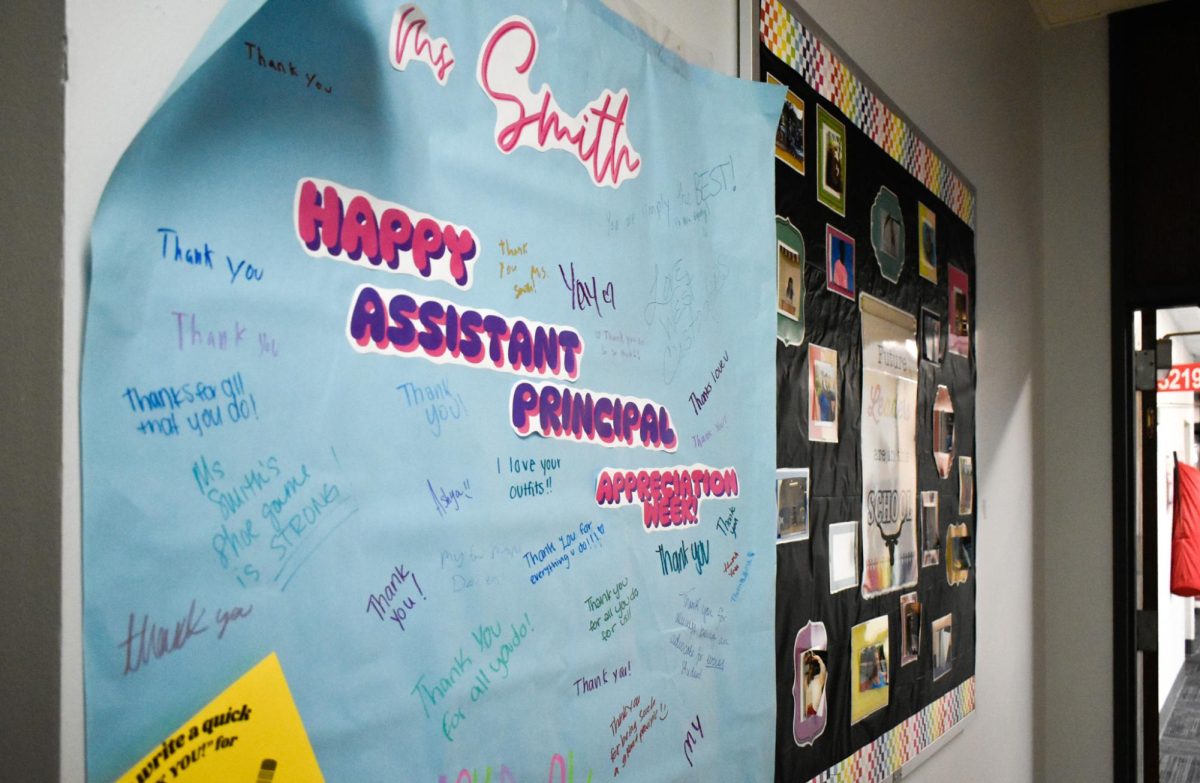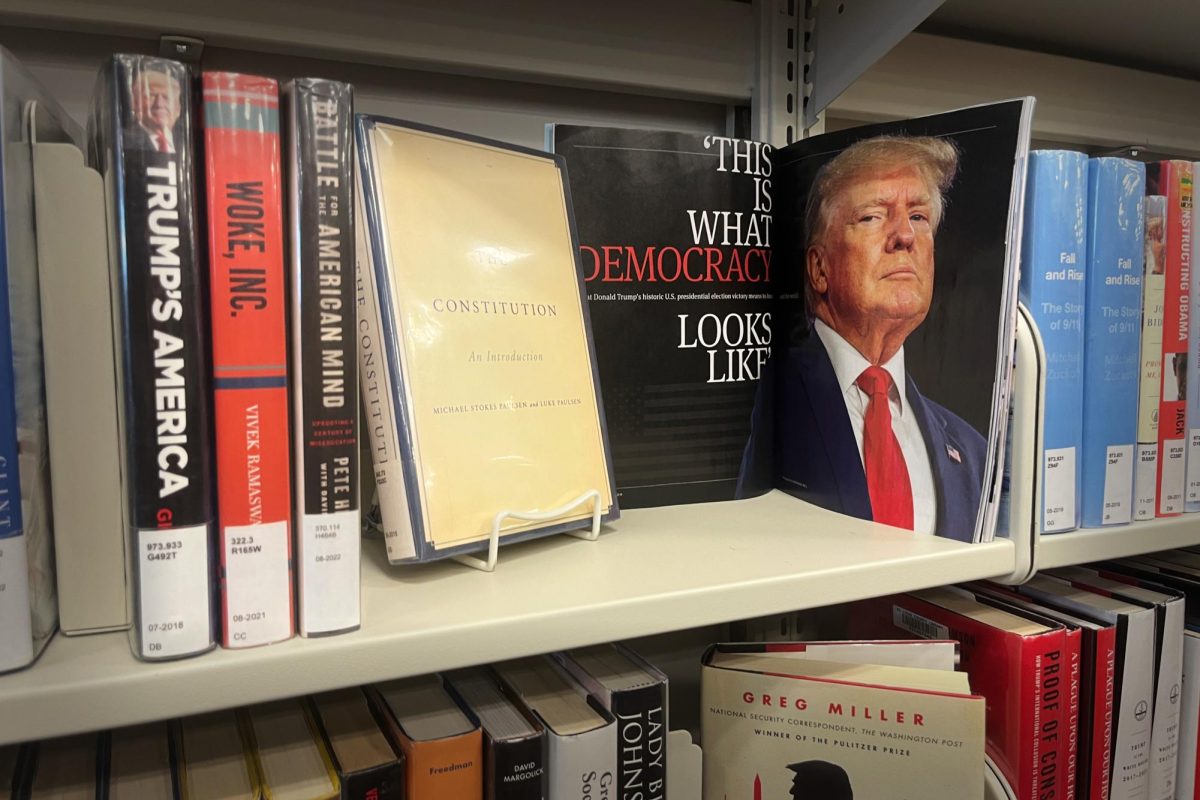From accidentally misprinted dates on invitations to wrongly heard rumors, we are all constantly in a battle searching for the truth. In our current world of hyper-interactivity and our acute obsession with creating content, the way we interpret and understand the events happening in our community and around the world are now more digitized than ever. People can share their thoughts with millions of people with one click of a button. Naturally, when social media serves as such a large outlet meant to connect and share helpful content, there are always going to be those who wish to abuse the systems that we have built and spread misinformation. Lies might be harmless on a smaller scale, but they can also be lethal on larger ones, and technology‚Äôs newfound chokehold on our lives has allowed misinformation and fake news to spread like a contagion, making it harder than ever to find actual, truthful content. There is no greater host of these diseases than on social media platforms.¬Ý
While the amount of fake news and misinformation we digest certainly has spiked in recent years, they have been a facet of our lives long before social media was conceived, back when the world was firmly planted in the domain of newspaper and print media. ‚ÄúClickbait journalism‚Äù has been around since printed newspapers were the standard. Using catchy headlines or hoaxes has become a common, effective marketing practice to attract clicks and increase views. On the opposite end of the spectrum, journalism teacher Lindsey Katz and her students practice altruistic principles regarding the creation of news, such as ensuring the credibility of sites used for research and doing their part to avoid bias in the news.¬Ý
‚ÄúA lot of what we do in journalism is creating [truthful media]. Where are we getting our research for our articles? Are we fact checking? Are we making sure, as journalists, that we remove bias from our pieces when [it] isn’t appropriate?‚Äù Katz said.¬Ý
Print media might have marked the beginning of an epidemic of misinformation, but social media undoubtedly marks its growing presence on the world stage. In recent years, one of the greatest online sources of biased or even completely falsified information is QAnon, a radicalist-right web of conspiracy theories that created serious allegations against the United States government, COVID-19 and more. Belief in QAnon spiked in 2020 ahead of the presidential election, backed by the support of Donald Trump. It was in part responsible for the insurrection at the U.S. Capitol on Jan. 6, 2021, just one example of the serious consequences that misinformation can harbor.¬Ý
Social media being a breeding ground for misinformation really isn’t a big surprise given that it’s baked into Big Tech’s core ideologies. The goal of all social media platforms, hidden within the trapdoor-filled labyrinth that is their terms and conditions and roped in their complex web of algorithms, has always been to make users feel as if they are in control. The illusion of user power is central to the ideologies of all social media platforms and it’s what allows them to influence your decision-making, beliefs and personal principles.
Contrary to their untruthful, albeit convincing, façade of idyllic communities where everyone supposedly gets along and you have control of what you do, every single aspect of your experience on social media platforms is highly monitored and recorded: what you like, comment on and even how long you look at a post. Then, their algorithm takes all this data, crunches the numbers, and spits out another post for you to look at. Then the cycle repeats again. And again. And again.
The danger of this system, and simultaneously the reason why social media platforms have such a hold on us, is because they quite literally can stay “on” forever. As long as their almighty algorithm functions, they can continue recommending you content, targeted ads and anything else that they desire. The worst part is that, in the midst of all of this, many users still believe that they are in control of what they see and interact with. And unfortunately, they are mistaken. Try as they might — try as we might — but the invisible hand behind the screen that dictates all has all the power. Our relationship with social media is parasitic, and we’re on the receiving end.
‚ÄúThe algorithms make it really difficult to find sources from multiple perspectives because they’re always trying to figure out what your biases are; they’re trying to sell you the news. If you’re not consistently searching for multiple perspectives, you’re not going to get multiple perspectives,‚Äù history teacher Kevin Doherty said. ‚ÄúI think because media is so global, it’s nearly impossible for a media enterprise to not have marketing as their number one priority. It’s not necessarily good or bad. It’s just the reality of our global world.‚Äù
While biased media content might be the backbone of social media’s role in the spread of misinformation, they have other strategies they use to augment it as much as possible. One of these strategies is the use of community — a hallmark of social media that companies are loud and proud about. Of course, united communities have benefits like connecting with those who share similar beliefs as you. However, it also has cons, because those people are the only people you are exposed to. Even the pros have cons in the sense that the people who you talk to might share more radicalized versions of your beliefs, or want to bring down or hurt others.
So begins the concept of the echo chamber, a state of content-wise practical purgatory. In an echo chamber, everything and everyone that you are exposed to on social media only aligns with your personal beliefs as determined by the abstruse algorithm, effectively reducing your ability to form complete opinions on your own accord and omitting large debates that might make you question your own principles. Prolonged exposure to only one view or belief shelters you from a rounded perspective and pushes your beliefs further to one extreme. The hard-to-swallow truth is that there is no escaping bias on social platforms and in the media as a whole because it is inconceivable for news to be written completely without it. Most major news outlets occupy some place on the political spectrum, their beliefs ranging from intensely conservative to equally progressive.¬Ý
Not to mention that these same news outlets are subject to media consolidation ‚Äî the process of concentrating ownership of our news to the hands of only a few corporations ‚Äî influencing the information that goes down the chain to the masses. This affects their coverage of certain topics and their coverage, meaning that if a user is only exposed to news sources that are solely conservative or solely progressive, it shifts their personal views to one end of the spectrum, whether they are conscious of it or not.¬Ý
Extending this idea to social media outlets, their highly personalized experiences that are supposed to be what draws users in actually make them much more susceptible to biased media consumption than traditional news outlets. These ideas have been discussed in documentaries like ‚ÄúThe Social Dilemma,‚Äù which studies the effect of social media on how we perceive ourselves and the world around us through the use of expert interviews and a compelling fictional storyline.¬Ý
Beyond omitted perspectives and changing personal principles, echo chambers practically welcome misinformation with open arms. One single falsified post or a casual joke made in passing can be sent around an echo chamber and amplified with every repost. This creates a media firestorm ‚Äî more people posting more content that gets reposted elsewhere ‚Äî similar to the way that the algorithms powering these platforms can keep recommending content infinitely, they can also give special attention and more traction to posts that garner a lot of interaction from users, also known as going viral.¬Ý¬Ý
Viral posts can create viral trends, encouraging more people to make similar content in an attempt to get their five seconds of fame at the mercy of an algorithm that they know nothing about. It’s a helpless rat race where everyone has to fight for a short period of attention. Social media content creators know that in the cacophony of content, it’s hard to get their posts interaction like likes, comments or reposts from users. In an effort to feel original and creative, many accounts often have to resort to the creation of falsified or exaggerated content. They often use tactics such as fear-mongering, which is the conception and distribution of exaggerated or sometimes even completely falsified news to instill a sense of fear or danger in a viewer.
However, it’s not reasonable to blame all problems involving misinformation on social media, because they aren’t totally at fault here. A lot of what makes fake news such a big issue in our world is because of our mental laziness. In psychology, dual process theory explains that when it comes to decision-making, there are two distinct processes occurring in our brains: a slower, more intentional and reason-based route and an efficient, unconscious and automatic response. Our brains, having to constantly make decisions about what deserves our attention, most often prefer the latter process since it requires the least amount of effort. In our mind, the effort of having to decide whether or not one singular post, tweet, or thread is truthful within hours and hours of scrolling is simply not worth it.
All of this is to say that misinformation has grown to be an immense and concerning problem in our current world. However, there might be light on the edge of the horizon. For example, social media giant Meta ‚Äî owner of Facebook and Instagram, has implemented fake news tracking ‚Äî so users can flag posts as being falsified and they will stop being shown on users‚Äô feeds. X/Twitter has also followed suit. While it‚Äôs great that social media companies are taking responsibility and finally acknowledging the deceit that goes on under their watch, it‚Äôs also up to us, the audience, to take back control of the news that we digest.¬Ý
‚ÄúAs the consumer, you just have to take responsibility for yourself and try to find those different sources. Our students here at West and their peers around the world are so much more equipped to do that,‚Äù Doherty said. ‚ÄúSo I’m encouraged by how well my students can navigate different media sources and sift through claims and try to find truth in multiple different perspectives.‚ÄùImproving media literacy is crucial to understanding when news‚Äô intent is to inform, persuade or deceive. Think critically about what you see online, and control your snap judgments by taking a look at the deeper meanings behind it. Manage your time on social media wisely and report content that you think is trying to purposefully mislead. This list is by no means exhaustive, but the journey to ridding the world of misinformation is long and complicated. The first steps we must take are small. Regain control over your news, and we‚Äôre one step closer to ending the search for truth.

![Since its introduction and subsequent explosion on the world stage, social media has proven to be a detriment to the fight against misinformation and fake news in the media because of its targeted marketed tactics and abuse of unified communities. This being said, taking responsibility over what you consume online and deciding whether or not it’s true is crucial. “It’s important to notice that [the spread of misinformation through social media] is happening, and as a teacher, media literacy is so important to teach,” journalism teacher Lindsey Katz said.](https://pwestpathfinder.com/wp-content/uploads/2023/11/nov-editorial-feature-1200x800.jpeg)
![Dressed up as the varsity girls’ tennis coach Katelyn Arenos, senior Kate Johnson and junior Mireya David hand out candy at West High’s annual trunk or treat event. This year, the trunk or treat was moved inside as a result of adverse weather. “As a senior, I care less about Halloween now. Teachers will bring their kids and families [to West’s Trunk or Treat], but there were fewer [this year] because they just thought it was canceled [due to the] rain. [With] Halloween, I think you care less the older you get,” Johnson said.](https://pwestpathfinder.com/wp-content/uploads/2025/10/DSC00892-1-1200x800.jpg)
![Leaning on the podium, superintendent Melissa Schneider speaks to Parkway journalism students during a press conference. Schneider joined Parkway in July after working in the Thompson School District in Colorado. “My plan [to bond with students] is to get things on my calendar as much as possible. For example, being in [classes] is very special to me. I am trying to be opportunistic [meeting] kids [and] being in [the school] buildings. I have all the sports schedules and the fine arts schedules on my calendar, so that when I'm available, I can get to them,” Schneider said.](https://pwestpathfinder.com/wp-content/uploads/2025/09/IMG_5425-1200x943.jpeg)


![Red, white and blue, the American flag holds the values of our democracy. The fight that we once endured has returned, as student journalists and senior correspondents across the country are losing their voices due to government control. “[Are] the White House and [the] government limiting free speech [and] freedom of the press? Yes [they are],” chief communications officer of the Parkway School District and former journalist Elisa Tomich said.](https://pwestpathfinder.com/wp-content/uploads/2025/03/Untitled-design-14.jpg)
![A board in the Parkway West counseling department displays pennants of selective universities. With a wide range of students interested in attending, it’s important that these schools have clear priorities when deciding who to admit. “[Washington University] had the major that I wanted, psychology, philosophy, neuroscience. That's a holistic study of the brain, and [WashU is] the only college in the world that offers that. That's the main reason I wanted to go; I got into that program,” senior Dima Layth said.](https://pwestpathfinder.com/wp-content/uploads/2025/02/Flag-1.png)

![Within the U.S., the busiest shopping period of the year is Cyber Week, the time from Thanksgiving through Black Friday and Cyber Monday. This year, shoppers spent $13.3 billion on Cyber Monday, which is a 7.3% year-over-year increase from 2023. “When I was younger, I would always be out with my mom getting Christmas gifts or just shopping in general. Now, as she has gotten older, I've noticed [that almost] every day, I'll open the front door and there's three packages that my mom has ordered. Part of that is she just doesn't always have the time to go to a store for 30 minutes to an hour, but the other part is when she gets bored, she has easy access to [shopping],” junior Grace Garetson said.](https://pwestpathfinder.com/wp-content/uploads/2024/12/DSC_0249.JPG-1200x801.jpg)

![Senior Sally Peters stands in the history hallway, contemplating her choices in the 2024 United States and Missouri elections on Nov. 5. As a member of Diplomacy Club, Peters has discussed key candidates and issues in contemporary American politics. “[As students], we're starting to become adults. We're realizing how much the policies that are enforced and the laws that make it through the House and Senate are starting to affect us. [Opportunities such as] AP [U.S.Government] and Diplomacy Club [make elections feel] a lot more real,” Diplomacy Club vice president and senior Nidhisha Pejathaya said.](https://pwestpathfinder.com/wp-content/uploads/2024/10/Flag-1-1.png)

![Sophomore Shree Sikkal Kumar serves the ball across the court in a match against Lindbergh. Sikkal Kumar has been a varsity member of the varsity girls’ tennis team for two years, helping her earn the number two rank in Class 2 District 2.“When matches are close, it’s easy to get nervous, but I [ground] myself by[staying] confident and ready to play,” Sikkal Kumar said.](https://pwestpathfinder.com/wp-content/uploads/2025/11/DSC2801-1200x798.jpg)
![Focused on providing exceptional service, sophomore Darsh Mahapatra carefully cleans the door of a customer’s car. Mahapatra has always believed his customers deserve nothing less than the best. “[If] they’re trusting us with their car and our service, then I am convinced that they deserve our 100 percent effort and beyond,” Mahapatra said.](https://pwestpathfinder.com/wp-content/uploads/2025/10/DSC_0018-1200x800.jpg)
![Sophomore Aleix Pi de Cabanyes Navarro (left) finishes up a soccer game while junior Ava Muench (right) warms up for cross country practice. The two came to Parkway West High School as exchange students for the 2025-2026 school year. “The goal for the [exchange] program is to provide opportunities for both Parkway students and our international exchange students to learn about other cultures, build connections and become confident, capable, curious and caring — Parkway’s Four C’s — in the process,” Exchange Program Lead Lauren Farrelly said.](https://pwestpathfinder.com/wp-content/uploads/2025/10/Feature-Photo-1200x800.png)
![Gazing across the stage, sophomore Alexis Monteleone performs in the school theater. The Monteleone family’s band “Monte and the Machine” has been releasing music since 2012, but Alexis started her own solo career in 2024 with the release of her first single, Crying Skies. “My whole family is very musical, [and I especially] love writing [songs with them],” Monteleone said.](https://pwestpathfinder.com/wp-content/uploads/2025/09/DSC7463-1200x798.jpg)

![Leaping through the air, senior Tyler Watts celebrates his first goal of the season, which put the Longhorns up 1-0 against the Lafayette Lancers. Watts decided to play soccer for West for his last year of high school and secured a spot on the varsity roster. “[Playing soccer for West] is something I had always dreamed of, but hadn’t really had a good opportunity to do until now. It’s [really] fun being out [on the field], and I’m glad I decided to join the team. It’s just all about having fun with the boys and enjoying what time we have left together,” Watts said.](https://pwestpathfinder.com/wp-content/uploads/2025/09/DSC_1951-1200x855.jpg)
![Shifting global trade, President Donald Trump’s tariffs are raising concerns about economic stability for the U.S. and other countries alike. “[The tariffs are] going to pose a distinct challenge to the U.S. economy and a challenge to the global economy on the whole because it's going to greatly upset who trades with who and where resources and products are going to come from,” social studies teacher Melvin Trotier said.](https://pwestpathfinder.com/wp-content/uploads/2025/05/MDB_3456-1200x800.jpg)

![Pitching the ball on Apr. 14, senior Henry Wild and his team play against Belleville East. Wild was named scholar athlete of the year by St. Louis Post-Dispatch after maintaining a high cumulative GPA and staying involved with athletics for all of high school. “It’s an amazing honor. I feel very blessed to have the opportunity to represent my school [and] what [it] stands for,” Wild said.](https://pwestpathfinder.com/wp-content/uploads/2025/05/unnamed-6-1200x714.jpg)
Will Gonsior • Dec 4, 2023 at 9:57 am
They used the internet to inform about the internet. Great job!